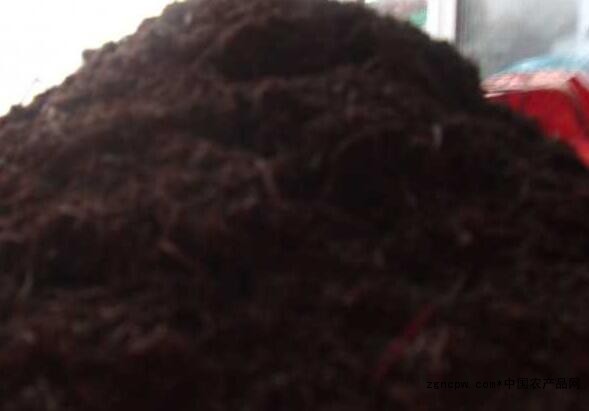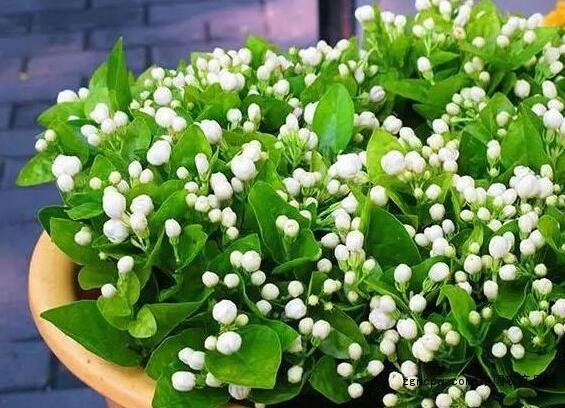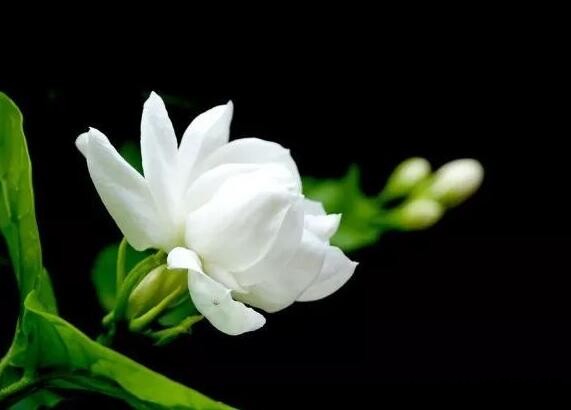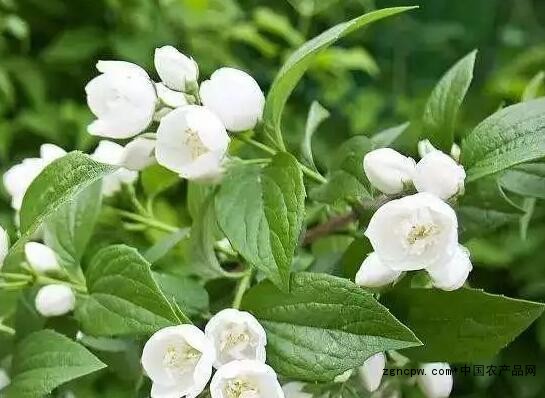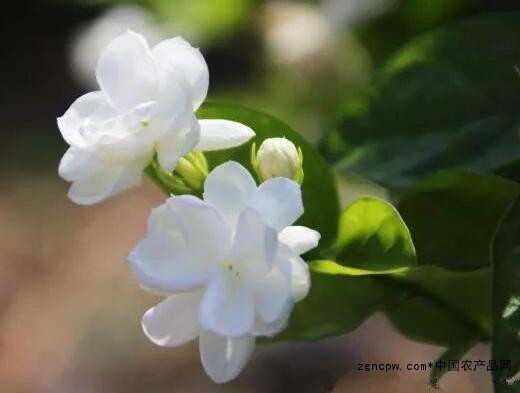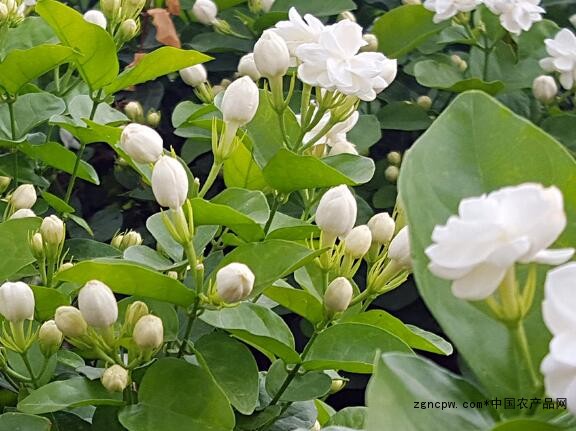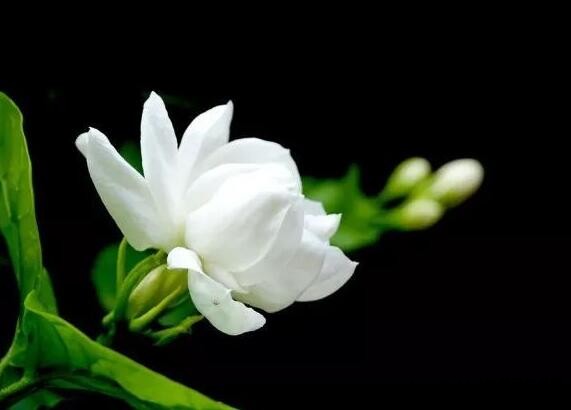[Agricultural Products Network] Come to a cup of jasmine tea and watch a martial arts novel. If you learn to grow jasmine and let your family and friends have a cup of homemade jasmine tea, are you very happy? What we are talking about is the cultivation technique of potted jasmine. Choose the soil before potted jasmine. After reviewing some of the information, Baidu Encyclopedia is more specific. Jasmine potted plants require the culture soil to be rich in organic matter, and have good water permeability and aeration performance. Generally, 4 parts of garden soil, 4 parts of compost, 2 parts of river sand or gluten ash can be used, plus fully decomposed dried cakes, chicken and duck manure, etc. Appropriate amount, and sieve out the powder and coarse particles, and cover the surface with a coarse grain. Potted jasmine on the basin. The time is mastered before the germination of the new shoots in April-May. As with other flowers, choose the appropriate flower pot according to the size of the seedling. When the basin is covered with a hand, the soil is cultivated with one hand. After the soil is covered with all the roots, the plant is slightly lifted upwards, and the basin is shaken a few times to make the soil and the roots in close contact. Then compact the potting soil by hand. After planting, pour the root water, then put it in a slightly shaded place for 7-10 days, avoid direct sunlight, and gradually see the light later. The daily management of potted jasmine. Water is very important. It should be moistened according to jasmine, not drought-tolerant, afraid of water accumulation, and enjoy the characteristics of ventilation, and master the watering time and watering amount. In the summer, water should be watered early and late every day. If the air is dry, it needs to be replenished. In the winter dormancy period, the amount of water should be controlled. If the soil is too wet, it will cause rotten roots or fallen leaves. It is necessary to apply a thin pancake once a week during the growth period. After changing the basin in the spring, it is necessary to pick the heart and shape it regularly. After the flowering period, it should be cut again to facilitate the sprouting of new branches, so that the plants are neat and strong, and the flowers are vigorous. Potted jasmine flowers can bloom from June to July. At this time, the root system has returned to normal growth, and a thin pot of water is poured every 7-10 days. In the future, it can be managed according to adult jasmine. Potted jasmine fertilization method. Jasmine is fat, especially for long flowering periods and requires more fertilizer. It also likes acid soil, which can be poured once a week with 1:10 fertilizer. From June to September, the liquid fertilizer with more phosphorus is applied during the flowering period. Z is applied once every 2-3 days. The fertilizer can be used to make the bean cake and the fish water and fertilizer solution, or use ammonium sulfate, superphosphate, general fertilizer. When the ingredients are mixed, the jasmine plants will be burned. It can also be sprayed on the foliage in the evening with 0.1% potassium dihydrogen phosphate aqueous solution, which can also promote more flowering. Note: Fertilization should not be too thick, otherwise it will easily cause rotten roots. Before pouring, use a spatula to loosen the soil and then pour it. Do not fertilize the soil when the soil is too dry or too wet. Fertilization was stopped in early September to improve the maturity of the branches and to facilitate wintering. Pruning of potted jasmine. In order to make the potted jasmine plant full and beautiful, after the flower is thanked, the broken flower branches should be cut off to promote the new technology of the base and control the height of the plant. The wintering management of potted jasmine. Jasmine chills, when the temperature drops to 6-7 ° C, should be moved into the room, while paying attention to window ventilation, so as not to cause the leaves to yellow off. At this time, the temperature is often unstable. When the weather is warm, it should be moved outside and ventilated. Jasmine is moved indoors for the winter and should be placed in a sunny room. The room temperature should be above 5 °C. Water is poured once every 7 days to make the pot soil slightly wet. In this way, the foliage can be kept fresh in winter, without losing its ornamental effect. Potted jasmine should be changed for one time each year. When changing the pot, remove some old soil and residual roots around the root of jasmine, replace it with new culture soil, and re-improve the agglomerate structure and nutrients of the soil, which is beneficial to the growth of jasmine. Change the basin, and then pour the water like the upper basin to make the roots and soils close together and restore growth. Before the pot is changed, the jasmine should be trimmed once, leaving only about 10 cm of the branches of the previous year, and cut off the dead branches and the dense, too thin branches. During the growing period, the old leaves that have grown too densely are often removed, which can promote the germination of axillary buds and multiple new branches and long flower buds. In the spring of April-May, jasmine is pumping long leaves, and the water consumption is not large. It can be poured once every 2-3 days. It should be poured around noon. It must be seen in the wet and pouring, and it will be poured through the water. May-June is the spring flowering period of Jasmine. Watering can be slightly more; in the summer of June to August is a high temperature climate, the jasmine grows fast, the leaf surface evaporation is also accelerated, the flowering period is strong, the sunshine is strong, the water needs more, and the water can be poured once in the morning and evening. Water is also used to spray the blades and the ground around the basin during drought. Because jasmine is not resistant to drought and is afraid of waterlogging, it should be timely drained in the rainy days in summer, and the temperature in autumn will be reduced to 1-2 days. In winter, the amount of water should be strictly controlled. If the soil moisture is too large, it is not good for wintering. Flowering management of potted jasmine. Pruning: Jasmine blooms in 3-6 years, and then grows year by year. It must be re-cut in time. Before the germination of the Spring Festival, the raw branches can be properly cut short, leaving the base 10-15 cm, so that most of the thick new branches occur. If the new branches grow very vigorously, the heart should be topped when growing up to 10 cm, and the secondary shoots should be promoted. , and the shape is compact, and the viewing value is high. Note: The pruning should be carried out on a sunny day. It can be combined with the thin leaves to remove the diseased branches, and the plants can be adjusted to facilitate growth and flowering of the buds. Fertilization: Jasmine is a plant that has been sprayed many times a year, has multiple buds, and has an annual flowering. Therefore, it requires a large amount of fertilizer and maintains sufficient fertility in the potting soil. This is an important guarantee for the jasmine flowering. Potted jasmine is better to use organic liquid fertilizer, but Z is good to use decomposed human excrement, or human feces and urine mixed with chicken and duck manure, pig manure, bean cake, and cakes (all must be cooked). When fertilizing time, it is appropriate to apply Z when there is a small dry crack in the soil around the pot wall. When the new shoot begins to germinate, it can be poured once every 7 days with dilute manure (1:9 for feces and water). When the flowering is fast, the concentration of the manure can be increased. It is poured once every 3 days. Precautions during the flowering jasmine flowering. 1 plastic surgery. Before the germination of the Spring Festival, the raw branches can be properly cut short, leaving the base 10-15 cm. After the new branch grows, it is necessary to spray the flower promotion king No. 3, which can transform the vegetative growth of the plant into reproductive nutrition, inhibit the main shoots from growing, promote flower bud differentiation, and bloom more. 2 In each flower bud period, the flower buds should be sprayed, which can promote the flower buds to be strong, the petals are hypertrophy, the flowers are pure, the flowers are rich, and the flowering period is prolonged. 3 fertilizer is sufficient. Generally, organic fertilizer and foliar fertilizer are good, and the time of fertilization is suitable for the application of Z when the soil is just white and the soil around the basin is small. 4 pruning after flowering. In order to make the potted jasmine plant full and beautiful, after the flower is thanked, the broken flower branches are cut off, which is good for the new technology at the base. If the above management work is in place, there will be three flowering periods from the end of May to the beginning of November each year, greatly improving the viewing benefits. Part of the above content comes from the professional network, the copyright belongs to the original author, the picture comes from Sohu.com, thanks to the creation. Greenhouse Vertical Hydroponics
Greenhouse Vertical Hydroponics
allows you to grow fresh vegetables and fruits at much higher crop yields and
relatively lower costs. Thus, not only is it a profitable undertaking, but one
which has proven of great benefit to humanity. With Greenhouse Hydroponics,
plants can be raised out of season resulting in better control and higher
yields of crops.
Greenhouse Vertical Hydroponics,Hydroponic Growing,Vertical Hydroponics JIANGSU SKYPLAN GREENHOUSE TECHNOLOGY CO.,LTD , https://www.skyplantgreenhouse.com